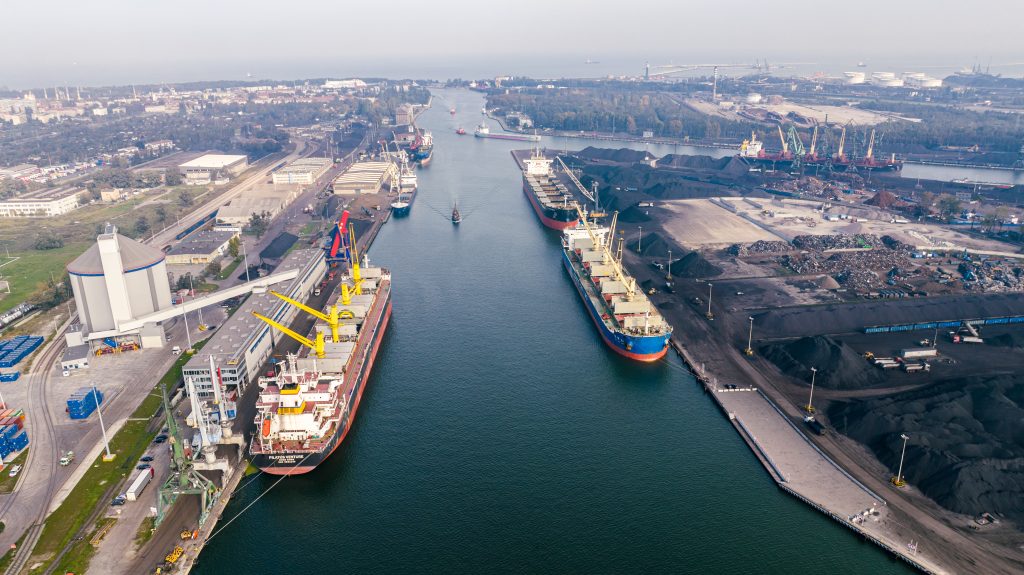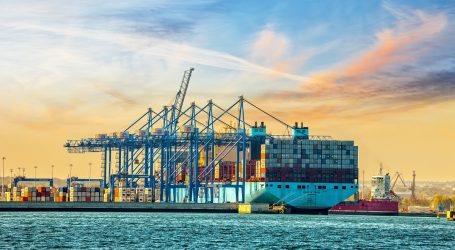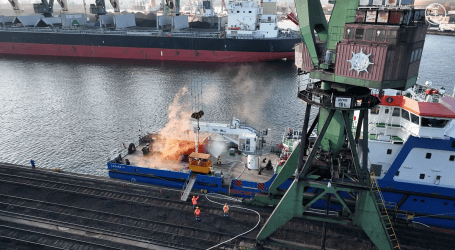Port of Gdansk goes for a record – first half figures leave no doubt
During the first half of the year, 41.2 million tonnes of goods were handled at the Port of Gdansk quays. This is a 36 per cent increase in volume compared to the same period last year. The largest increases were recorded in energy commodities such as coal and liquid fuels.
After the first quarter of this year, the Port of Gdansk jumped to 8th place in the ranking of European ports, ahead of such port heavyweights as Marseille, Barcelona, Constanta and Valencia. The port of Amsterdam is already within reach. The Port of Gdansk continues to hold the position of container leader in the Baltic Sea and 2nd place in total transshipments. It only gives way to the port of Ust Luga, the main export window for Russian energy raw materials.
After the first half of the year, energy raw materials are on the upswing in the Gdansk port. Liquid fuel transshipments reached 18.3 million tonnes (up 59 per cent), coal 8.4 million tonnes (up 117 per cent). General cargo recorded a 6 per cent decline – reaching 11 million tonnes.
A significant challenge for ports in Central and Eastern Europe, including the Port of Gdansk, is currently the handling of grain. In six months, some 1.4 million tonnes of grain (especially maize) were exported through the Port of Gdansk, an increase of 52 per cent compared to the same period last year. In comparison, for the whole of 2022, the Port of Gdansk handled just over 1.9 million tonnes of grain. Other bulk reached 1.7 million t (up 9 per cent).
– It was a very good half-year. We can already say that we will break the 2022 transshipment record. The latest results clearly show how good a shape the Port of Gdansk is in. In total, we transshipped 36 per cent more goods than last year,’ concludes Łukasz Malinowski, CEO of the Port of Gdansk. – Just last year, the Port of Gdansk was ranked 13th in Europe, and we are already in 8th place.
In the last six months, a total of 1 832 merchant ships called at Gdańsk (average GT 24 585). This is 125 more vessels than in the first half of 2022 (the average GT was 20,394).
There is a noticeable increase in cargo handling in the Inner Port – by as much as 66.7 per cent. This is due, among other things, to the investments made in this part of the port, which make the calls of larger vessels possible. The modernisation of the fairway (7 km long) and the extension of quays (5 km) in the Inner Port was completed in 2022. However, this is not the end of investment in the Inner Port.
The Port of Gdansk has received funding for the project entitled ‘Improving the infrastructure of the Port of Gdansk with an analysis of the implementation of a low-emission OPS system for the sustainable development of the TEN-T network’. The nearly EUR 100 million grant comes from the Connecting Europe Facility (CEF 2). This project envisages the redevelopment of four more quays, with a total length of nearly 2 km, together with the necessary underground and rail infrastructure.
The Wiślane and Bytomskie Quays are along the Port Channel, while the Ore III and Coal Quays are in the Mining Basin. ZMPG has announced three tenders for selecting contractors for construction works at Ore, Bytom and Wiślane Quays. The announcement of the fourth tender for the Coal Quay is planned for the third quarter of 2023.
The implementation of this project will contribute to increasing the competitiveness of the Port of Gdansk, strengthening the handling potential and increasing capacity.
Source: PortalMorski.pl




